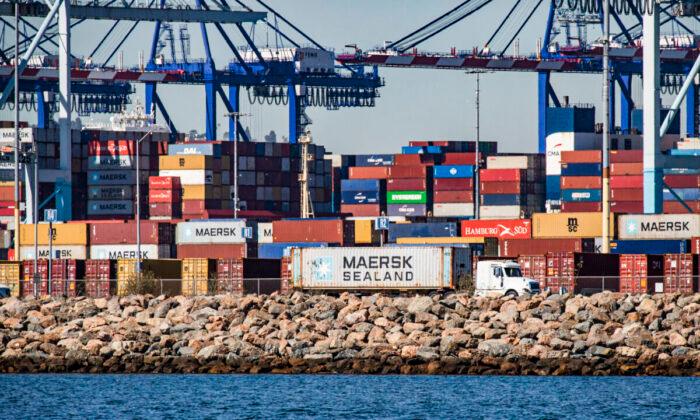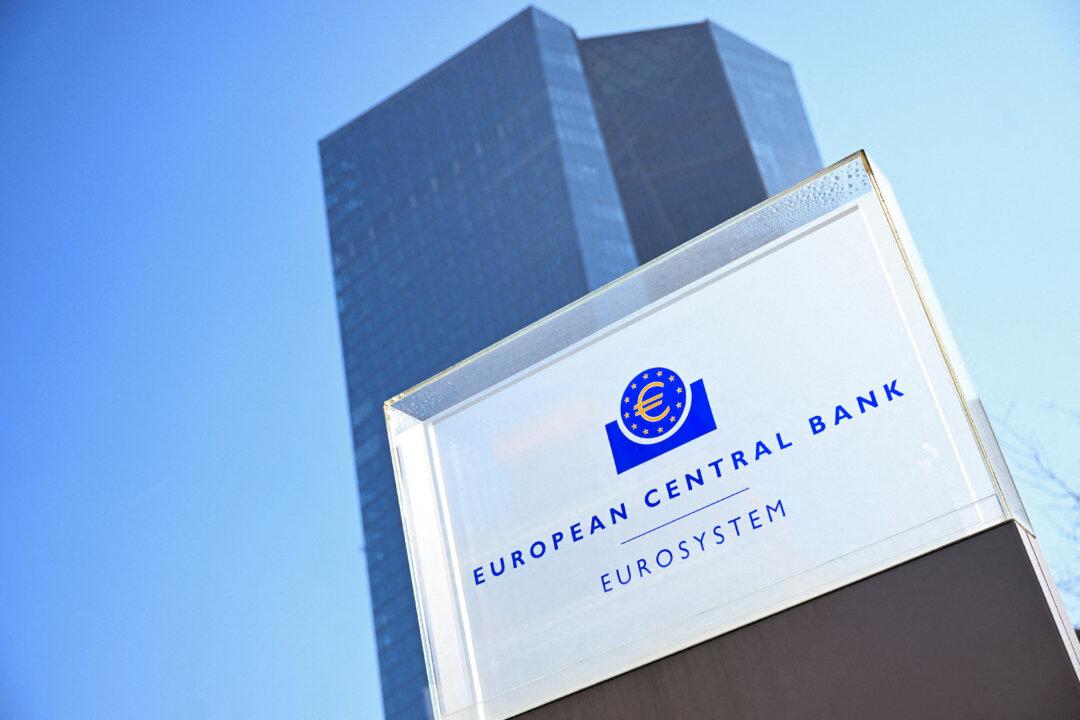Import prices rose sharply in April, and Americans’ long-run inflation expectations jumped to their highest in 12 years, dovetailing with other pricing data released earlier this week, suggesting inflation may be a more entrenched problem than many believe.
Higher prices of fuel imports—which rose 4.5 percent in April—drove the bulk of the increase. Foods, feeds, and beverages also contributed, rising 0.2 percent over the month.
Other price data released this week—the Consumer Price Index (CPI) and the Purchasing Price Index (PPI)—both showed inflation accelerating on a month-over-month basis, suggesting that inflationary pressures remain elevated despite the Federal Reserve’s yearlong campaign of rapid interest-rate hikes.
Inflation Expectations Jump
Long-run inflation expectations, according to the University of Michigan consumer sentiment survey released Friday, rose to a reading of 3.2 percent, the highest since 2011.But while inflation expectations rose, consumer expectations about the strength of the economy one year ahead plummeted by 23 percent.
“Long-run expectations slid by 16 percent as well, indicating that consumers are worried that any economic downturn will not be brief,” Joanne Hsu, University of Michigan Surveys of Consumers director, said in a statement.
“Consumer sentiment tumbled 9 percent amid renewed concerns about the trajectory of the economy, erasing over half of the gains achieved after the all-time historic low from last June,” Hsu said.
While American consumers have shown considerable resilience amid the current inflationary episode, Hsu warned that their rising anticipation of a recession will lead them to rein in spending when signs of economic weakness emerge.
Consumer spending is a key driver of the U.S. economy, accounting for around two-thirds of economic growth.
Markets Underpricing More Rate Hikes?
Federal Reserve chair Jerome Powell last year specifically referenced the University of Michigan’s inflation sentiment gauge as a key factor in determining whether inflation expectations remain “well-anchored,” which is Fed-speak for the idea that expectations are relatively stable over a longer time horizon.Markets have been betting heavily that there will be a pause in interest-rate hikes over the summer months after the Fed raised rates at its fastest pace since the 1980s over the past year. Since March 2022, the central bank has lifted rates from near zero to a range of 500–525 basis points.
The odds of a rate hike at the June meeting rose to 13.1 percent from around 10 percent just hours ago.
While there are currently no expectations for a rate drop at the June meeting, the odds of the Fed pulling rates back down to a range of 4.75–5.0 percent when the Federal Open Market Committee (FOMC) again meets in July now stand at a whopping 32.7 percent.
“The odds of more rate hikes are woefully underpriced right now,” Shapiro said.
Fed Official Warns Inflation Still Too High
Michelle Bowman, who sits on the Fed’s board of governors and is a voting member of the central bank’s rate-setting FOMC, said Friday that the latest price data show inflation is still too high to warrant an easing of monetary policy and may even require further interest-rate hikes.Bowman said that the latest CPI figures showed insufficient progress in the Fed’s fight to lower price pressures. They showed that inflation in April inched down in annual terms from 5.0 to 4.9 percent, but shot up fourfold in monthly terms from 0.1 percent to 0.4 percent.
“In my view, the most recent CPI and employment reports have not provided consistent evidence that inflation is on a downward path,” Bowman said.
“Should inflation remain high and the labor market remain tight, additional monetary policy tightening will likely be appropriate to attain a sufficiently restrictive stance of monetary policy to lower inflation over time,” she said.
“I also expect that our policy rate will need to remain sufficiently restrictive for some time to bring inflation down and create conditions that will support a sustainably strong labor market,” Bowman added.
Fed officials will have an additional CPI release before the FOMC’s next meeting on June 14.
“Markets have been betting hard on there being a pause in interest-rate rises over the summer months, but the Federal Reserve continues to hold that door open for more rises,” said Tom Hopkins, portfolio manager at BRI Wealth Management in London.
“Markets need to slowly wake up to the fact that the data is not cool enough, and the Fed is open to raise rates further,” he added.





